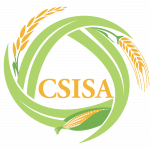Situation Report on Nepal’s Agrifood Systems February 2024 | Bulletin Number 15
Nepal registered a significant decline in poverty from 25.2 percent in 2010-11 to 20.3 percent in 2022-23, according to the just-released Nepal Living Standards Survey (NLSS) IV 2022-23. Data suggest that the incidence of headcount poverty is highest in Sudurpashchim Province (34.2 percent) and the lowest in Gandaki Province (11.9 percent). The overall decline that was measured, however, indicates positive benefits accrued from economic development.
In mid-January of 2023, year-on-year inflation in Nepal was 5.3 percent compared to 7.3 percent a year ago. Food and beverage inflation experienced a decline of 1.5 percent in mid-January compared to the previous month. This decline in inflation is expected to provide some relief to net food-purchasing families, particularly in urban and peri-urban areas.
Nepal received NPR 733.22 billion (USD 5.5 billion)1 of remittances between mid-July and mid-January, marking a 24.3 percent rise from the same period in the previous year. However, there was a notable 11.3 percent decline in remittances to NPR 120 billion (USD 901.4 million) in mid-January 2024 compared to last month, potentially signaling a decrease in future remittance trends that should be carefully monitored.
Retail prices of cereals at both the national level and in the Western provinces remained stable compared to the previous month. However, there was a decrease in year-on-year vegetable and edible oil costs. On the other hand, the prices of milk, eggs, and fish increased compared to the same period last year. While these higher prices may benefit smallholder farmers, they could pose challenges for poor consumers who purchase these foods to access animal-based proteins, minerals, and vitamins.
